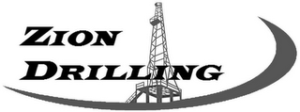The Excruciating Difficulty of Drilling for Oil – 51 Steps
Watch these 51 steps to find oil.
To find oil, you cannot simply punch a hole in the ground. Perhaps, this is what many people believe.
There are many complexities involving multiple service companies and two complete teams of crews. With so much happening (and with so many difficulties regarding scheduling, safety, and environmental practices) drilling for oil is not for the faint of heart.
This is a general 51 steps for drilling in the USA, for example. But, drilling for oil in Israel is even more involved and more difficult than this list.
The following steps are necessary in order to produce oil or gas from a well:
-
10-30 different service companies are required.
-
Each company working on a well must adhere to around-the-clock scheduling, safety and environmental practices.
-
Build a new road to access the rig location.
-
Clear the area for the new rig.
-
Build infrastructure for water and electricity around the rig site.
-
Dig an earthen pit to prevent soil or water table contamination.
-
Dig a pilot hole at the precise location marked by the survey crew.
-
Dig two other holes (the “mouse” hole and the “rat” hole) nearby to hold pieces of equipment and pipe during drilling.
-
A rig that can dig a 10,000 ft. well requires 50-75 people and 35-45 semi-trucks to move and assemble the rig.
-
Assembly of the rig takes around 3 and a half days.
-
A strict inspection of the rig must take place once built.
-
Operations of the rig go on 24/7, typically ceasing only one day each year for Christmas.
-
Two shifts of two complete crews must work the rig every day.
-
There are two stages of drilling: 1. running and cementing of cases and 2. drilling until the bit reaches the depth of the targeted zone.
-
Each drill bit typically lasts 4,500 – 6,500 feet of drilling.
-
Replacing the bit requires the removal of the entire string of drill pipe in a process called “tripping out”.
-
“Tripping out” takes several hours and requires crews to cool the bit and keep the soil and hole intact.
-
To help keep cuttings from plugging the hole, the mud must be sent through shakers to send the cuttings into a separated area.
-
Additional mug system equipment: de-sanders, de-silters and de-gassers, remove smaller particles and gas from the mud.
-
Clean mud is then recirculated back down into the hole.
-
The Blow-Out Preventer (or “BOP”) is installed on top of the casing head before drilling takes place.
-
The BOP must have high-pressure safetly valves designed to seal off the well and block any escaping gases or liquids from the hole beneath in order to prevent a blow-out from occuring.
-
Drilling must begin with a designated surface depth, usually around 50-100 feet below the water table.
-
Special care must be taken to prevent contamination of the water in the water table while drilling by isolating the water table and the wall with concrete and steel encasing.
-
New sections of pipe must be added to the string as the bit drills deeper.
-
When the hole reaches a designated depth, the derrickhands secrete fluid through the hole to condition it for logging.
-
A “logging tool” measures the depth and condition of the hole for the oil company.
-
The tool gives the information of whether or not the well can indeed produce oil or gas.
-
At this point, it must be determined whether the well is to be complete or plugged and abandoned.
-
If the well is designated as a producer, the crew must re-insert the pipe back into the hole to ensure the hole is still intact.
-
To test the hole, mud must be re-circulated.
-
Once everything tests positively, the drill pipe is removed.
-
At this point, the crew must insert the last string of production casing running the entire depth of the hole.
-
Then, the casing is cemented in the hole.
-
The production crew then brings in the work-over unit and rigs it up to prepare the hole for production.
-
The crew runs small diameter tubing into the hole as a conduit for oil or gas to flow through and up the well.
-
Next, the work over unit trips out of the hole and picks up a perforating gun.
-
The perforating gun is lowered into the hole to production depth using a thin metal cable called a “wireline”.
-
An electrical signal is sent down the wireline, firing the gun and igniting explosive charges.
-
These charges create holes through the cement encasing and formation connecting the well bore to the reservoir.
-
To stimulate the flow of hydrocarbons (or oil), sometimes it’s necessary to “frack” the well.
-
“Fracking” involves pumping air, sand and fluids under extreme pressure down the hole and out through the perforations.
-
This fractures or forces cracks into the formation.
-
The remaining particles will hold the cracks open, releasing the flow of oil or gas.
-
Monitoring the flow allows the crew to determine the best location for the “choke”.
-
The “choke” controls the flow of the oil or gas.
-
Once pressure is released, the hydrocarbons are allowed the escape through the fractured zone and flow into the well bore.
-
The oil or gas can now travel up the well casing string.
-
The well bore is isolated from the surrounding formations with casing and cement, preventing any contamination.
-
The final step is to install a pump jack or production well-head, or what’s called the “Christmas Tree”.
-
It’s the time to produce the well and plan for any future field development.






[…] post The Excruciating Difficulty of Drilling for Oil – 51 Steps appeared first on Zion Oil and Gas, […]